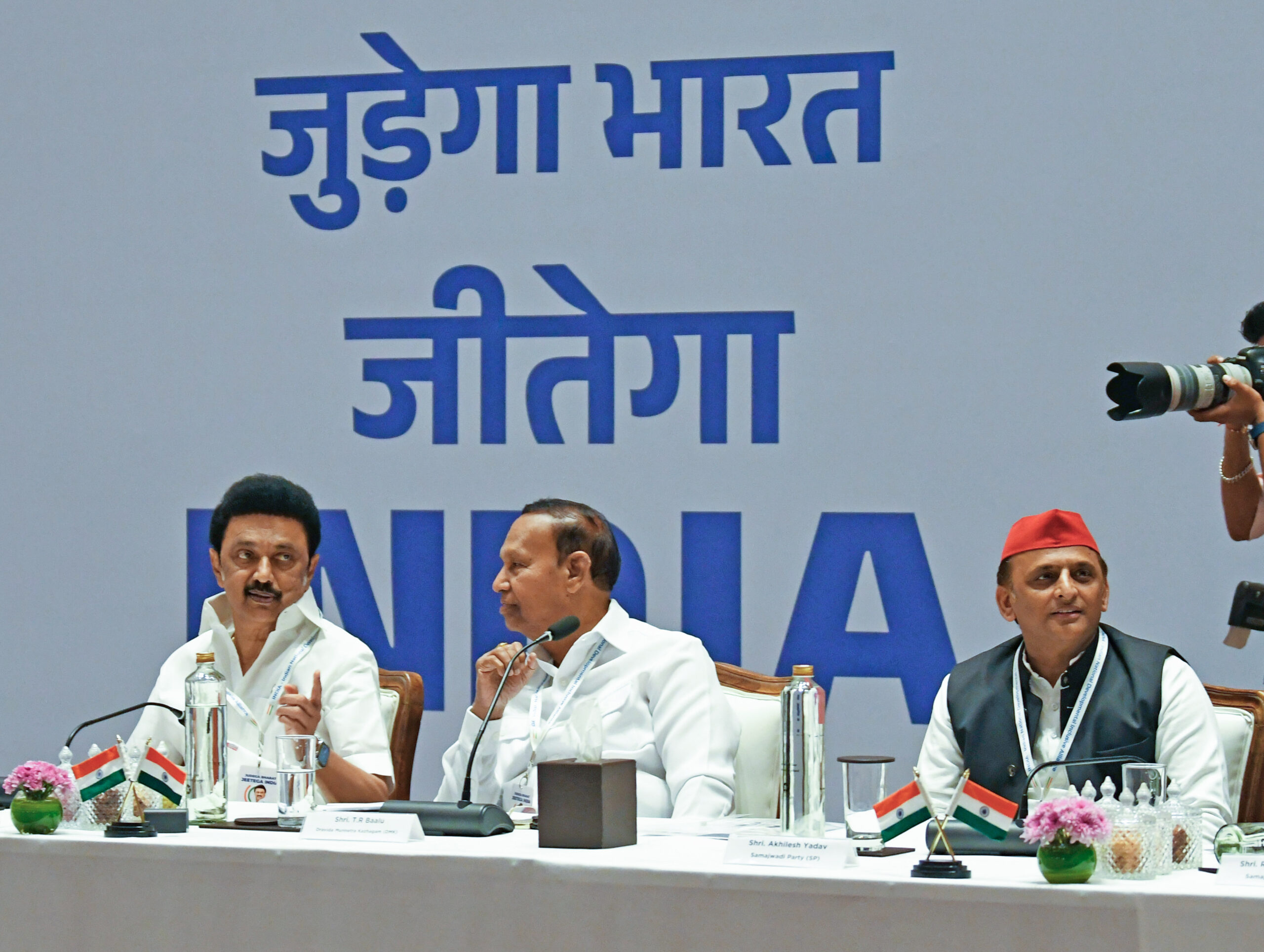


Following an unexpected and humiliating defeat in the Hindi heartland states of Rajasthan, Chhattisgarh and Madhya Pradesh, the Congress is facing a stiff challenge from within the INDIA alliance. There is no indication whether, in less than six months to go, INDIA alliance would announce its prime ministerial face or at least a coalition convenor, secretariat, election management mechanism and a common minimum programme.
For INDIAS alliance, the Narendra Modi question continues to puzzle them. The unconventional choice of three chief ministers of Chhattisgarh, Madhya Pradesh and Rajasthan has had a demoralising effect on many non-BJP-NDA parties. The appointment of some rookie yet hard working party workers as chief ministers has a potential to change how power dynamics function in Indian politics. If the opposition parties do not alter their way of thinking, they would be seen as projecting and perpetuating a sense of entitlement. On the other hand, any attempt to change the grammar of power politics would be seen as a step following a ‘Modi model.’
Since December 3, 2023, INDIA alliance parties have been debating and discussing whether Modi as a prime minister should be questioned and criticized without offering the electorate an alternative or option? It is a catch 22 situation for INDIA alliance partners as they cannot resist making a dig at Modi. At the same time, there is near consensus in the INDIA alliance not to project a face from among themselves as prime ministerial face
Some INDIA constituents also have a trust issue with the Congress. The proposed seat sharing formula or its talks in INDIA alliance’s proposed December 19 meeting are now likely to face greater resistance from the TMC, SP, JD [U] and AAP. There is also a fear that a sense of despondency or opportunistic posture may lead to exodus from the INDIA alliance as there is a growing fear in the opposition that 2024 Lok Sabha is a done deal.
At its own backyard, the grand old party is clueless whether to seek services of Sonia Gandhi or lean on AICC chief Mallikarjun Kharge to bring INDIA alliance back on focus. Sonia who had steered 2004-2014 UPA regime and kept the coalition together in spite of many hiccups and challenges, reportedly wants Kharge and Rahul Gandhi to shape the INDIA alliance. Kharge, on the other hand, has a lot of experience and goodwill but his habit to look for a direction from the Gandhis is proving to be his nemesis. INDIA alliance partners such as Mamata Banerjee, Nitish Kumar, Arvind Kejriwal and Akhilesh Yadav want Kharge to make some conciliatory gesture and informally hand over the alliance leadership to a regional leader. It is not only a bitter medicine to swallow but politically, Kharge finds himself incapable of taking such a crucial call.
In some ways, Rahul and Priyanka are two weak links in all alliance talks. There is no role definition for Rahul and Priyanka Gandhi in the Congress even though it has been over a year since Mallikarjun Kharge took over as the 88th AICC chief. Kharge has reached out to all opposition leaders but a word has gone out that for every political decision, he rushes to Rahul Gandhi for clearance and action
The biggest question facing INDIA alliance partners is the Narendra Modi question. Should the incumbent prime minister be questioned and criticized without offering the electorate an alternative or option? It is a catch 22 situation for INDIA alliance partners as they cannot resist making a dig at Modi. At the same time, there is near consensus in the INDIA alliance not to project a face from among themselves as prime ministerial face.
It may be recalled that during a meeting of the 13-member panel of the Opposition took place at the residence of Nationalist Congress Party (NCP) president Sharad Pawar in Delhi in September 2023, the INDIA alliance had agreed to host first meeting of the broadband coalition in Bhopal in the first week of October. But MPCC chief Nath declined to play the host of a public meeting that would have focussed on the «issues of rising prices, unemployment and corruption of the BJP government.»
Nath’s opposition to the INDIA alliance meet in Bhopal was manyfold. He had argued that the proposed alliance was for Lok Sabha polls and had a potential to damage his election that he thought he was winning with ease. Nath was also aware of the controversy relating to sanatan dharma by Tamil Nadu chief minister’s son Udaigiri. Nath was also in no mood to accommodate the Samajwadi Party, JD [U} and the left in a handful of seats. It is a common knowledge that Akhilesh made a big issue of the slight given by Nath and he found some support from Nitish Kumar and Mamata Banerjee. What was worse for Nath was the shift of the ‘others’ vote share in Madhya Pradesh in favour of the BJP taking its voting percentage to a high of 46 per cent while the Congress remained at 40 per cent. Could Nath have averted this skirmish?
Paradoxically, barely a few days after the results came out, Kamal Nath had reportedly tried to reach out to Mamata Banerjee, Akhilesh Yadav and Nitish Kumar, seeking their support for a common cause against the EVM machines. Nath wants INDIA alliance to highlight the recommendations of the Citizens’ Commission on Elections headed by Justice Madan Lokur which had found EVM machines not to be verifiable. Subhashish Banerjee, a member of the Citizens panel argues that the source code should be made public, or that EVMs should be standalone and use only one-time programmable chips etc., only serve to detract from the main issue. Even if all these demands are met, an EVM will still not be software independent and hence not verifiable.